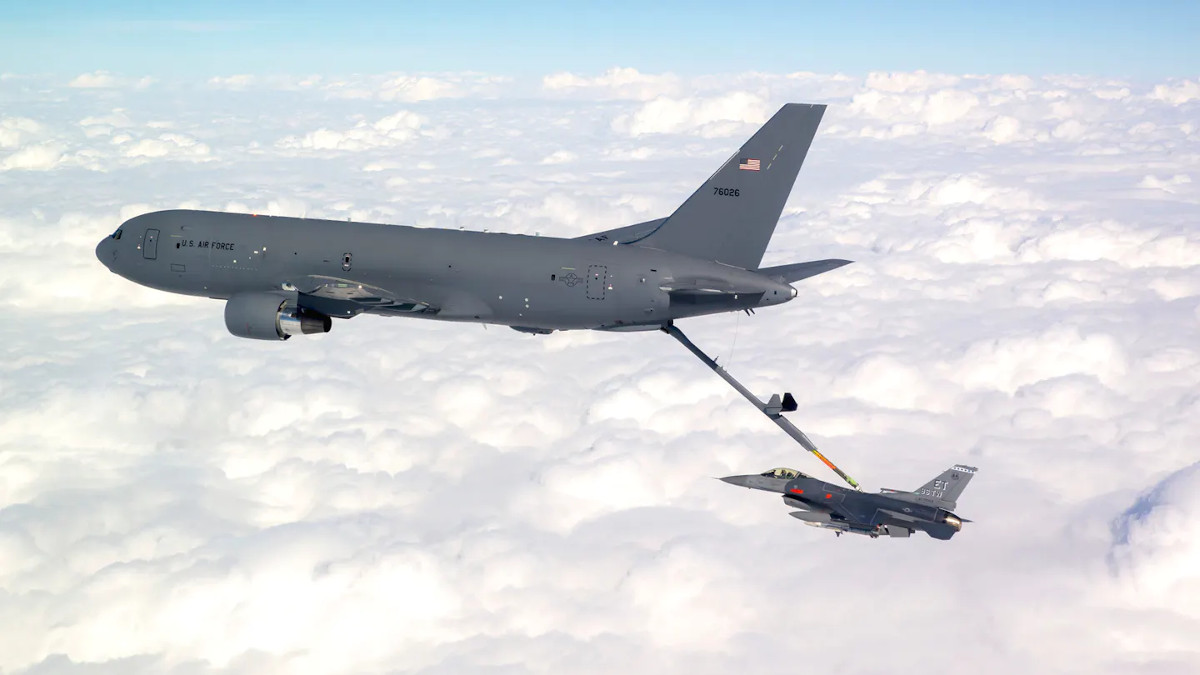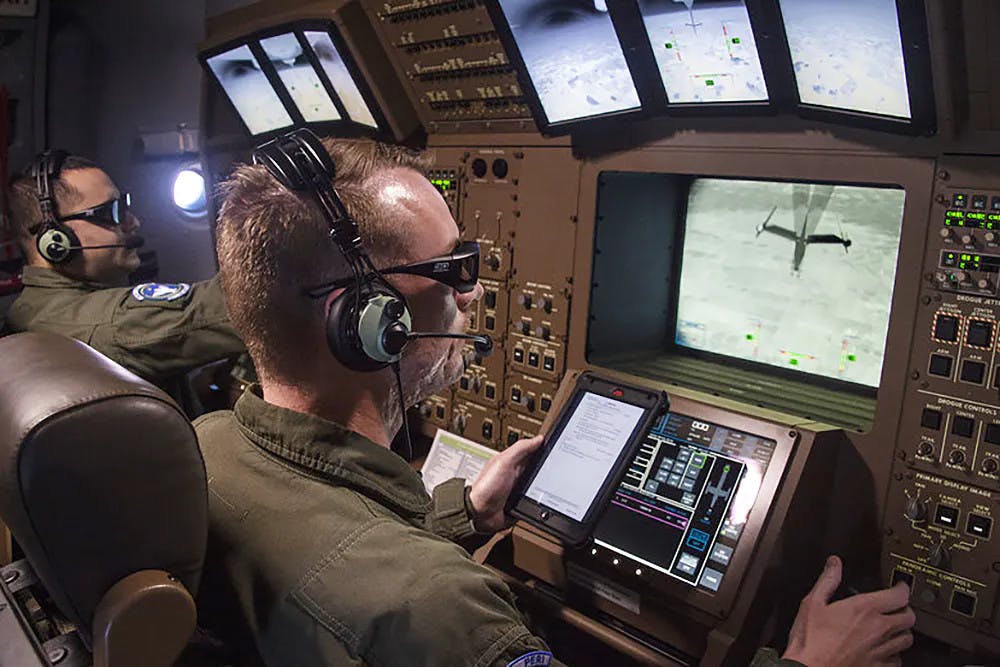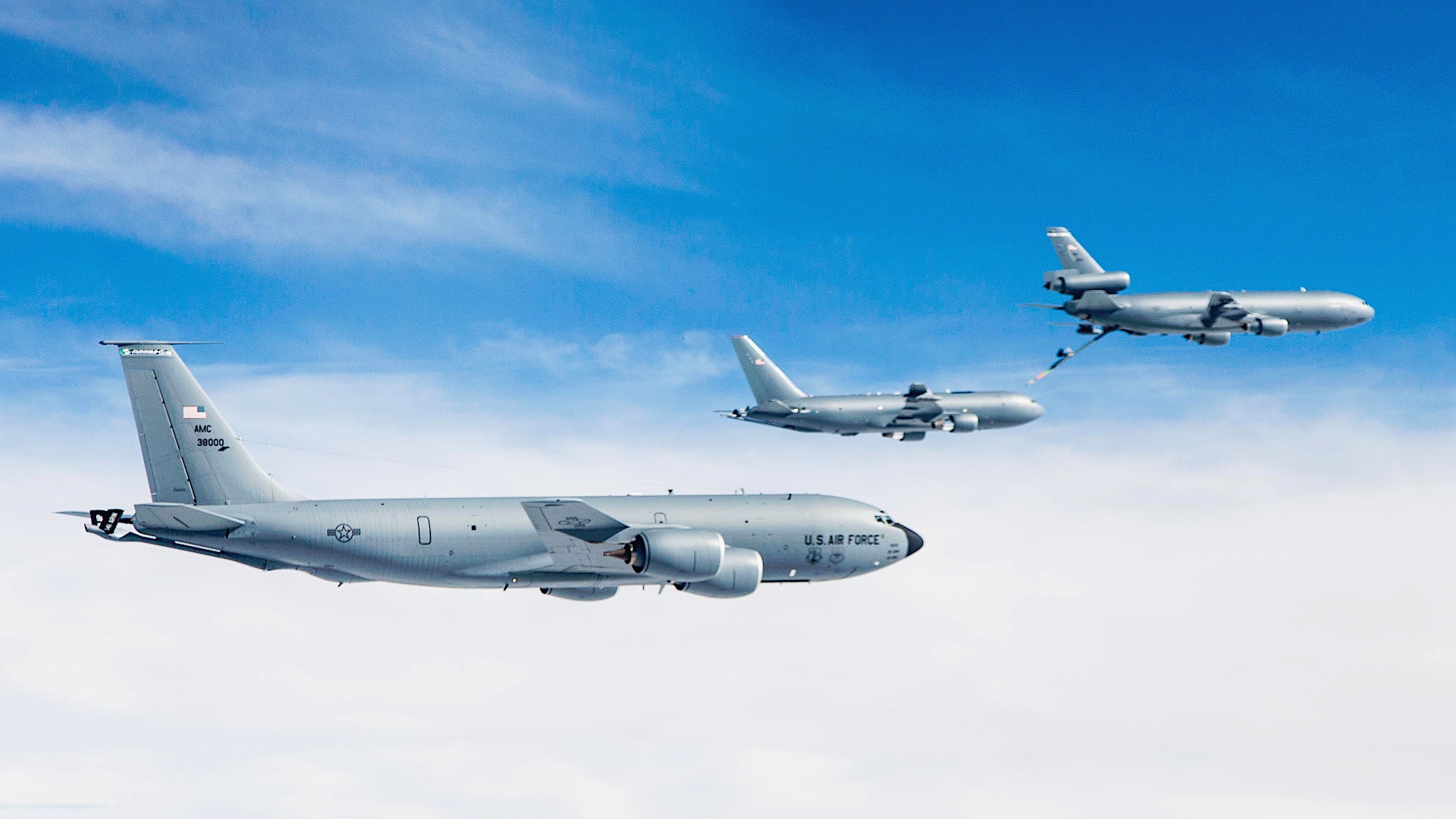The head of U.S. Transportation Command has publicly challenged the U.S. Air Force’s assertion that it can retire 16 KC-10A Extender and 13 KC-135R Stratotanker aerial refueling tankers in the coming fiscal year without having a major operational impact. This comes as the Air Force says that it hopes Boeing, the manufacturer of the troubled new KC-46A Pegasus tanker, will have devised an acceptable strategy for fixing critical issues with those aircraft, especially with the Remote Vision System that boom operators rely on, which are preventing them from taking part in actual combat and other contingency operations.
U.S. Army General Stephen Lyons, the commander of Transportation Command (TRANSCOM), made his position clear in a hearing before the Senate Armed Services Committee on Feb. 25, 2020. The general had also outlined his points in a letter containing his so-called “Unfunded Priority List,” a wishlist of things the command wants if Congress makes additional funding available, which he sent to the House Armed Services Committee on Feb. 20. Breaking Defense was first to report on that letter.
“We believe [these planes] must be retained,” General Lyons told Senators. Retiring the KC-10As and KC-135Rs before the KC-46As are truly capable of performing their key aerial refueling mission does create a “dip in operational capability.” He added that the Pegasuses were “not usable” in their present configuration for actual operational missions.
“Aerial refueling is USTRANSCOM’s number one unfunded priority,” Lyons had explained in his letter to the House Armed Services Committee. The Air Force’s desire to retire the KC-10As and KC-135Rs in the 2021 Fiscal Year “creates a capacity gap with significant impacts to Combatant Command daily competition and wartime missions, and negatively impacts senior leader decision space for mobilization when confronted with a crisis.”

Lyons wants Congress to “buy back” the tankers that the Air Force has proposed retiring in the 2021 Fiscal Year and insist on a “year-by-year review” of any future tanker retirement plans “based on KC-46 progress.” Transportation Command has estimated that it would cost $110 million to keep the 16 KC-10As and 13 KC-135Rs flying for another year.
TRANSCOM’s overall view of the situation stands in stark contrast to the Air Force’s view that the plans it outlined in its 2021 Fiscal Year Budget proposal presented an “acceptable risk” to its overall aerial refueling tanker capacity. The service has also insisted that its decision to continue buying KC-46As will allow it to meet a Congressionally-mandated fleet of 479 tankers in total, despite acknowledging the limited capabilities that the Pegasuses offer in their present form.

“So the risk we take in the – the capacity for tankers essentially is what we consider acceptable risk, given that we never go below the 479 total tankers available, and it allows us to – even though we’re – we don’t have full capability on the KC-46 yet, it allows us to continue to do the testing that we want to do so when we complete those fixes in the – in the tanker that we’re fully able to – to make those fully mission capable and get started immediately,” Air Force Major General John Pletcher Air Force Deputy Assistant Secretary for Budget, Office of the Assistant Secretary of the Air Force for Financial Management and Comptroller, told reporters during the rollout of the service’s Fiscal Year 2021 budget request on Feb. 10.
The KC-46As still suffer from a number of critical issues and there have been persistent problems with Boeing’s quality control during the production of the aircraft. The biggest issue, in terms of operational capability, remains the poor functionality of the tanker’s much-touted Remote Vision System (RVS), a saga that The War Zone
has been following closely in recent years.
In a traditional aerial refueling tanker equipped with a boom, a boom operator lies in the rear of the plane and steers it into receiving aircraft. On the KC-46A, the boom operators sit in the main cabin and use the RVS, which consists of an array of cameras at the rear of the tanker, to perform this task.
The RVS’s video feeds offer a hybrid 2D-3D view and the boom operators wear special glasses to get the full effect, similar in broad strokes to what one might experience watching a 3D movie in a theater. Testing exposed a litany of problems, including a lack of depth perception raising the risk of the boom hitting the receiving aircraft. You can read more about the full extent of the RVS troubles in these past War Zone pieces.

Boeing agreed last year to completely overhaul the system at its own expense, but has yet to present a proposal that the Air Force believes will adequately solve the problem. The service hopes the company will have an acceptable solution ready next month, but it will still take years to fully develop and test it and then integrate it onto the aircraft it has already received.
As of December 2019, Air Force units had taken delivery of 30 KC-46As, all of which will need the upgrades. The service wants to buy another 15 Pegasuses in the 2021 Fiscal Year.
Growing concerns about tanker capacity could also open the door for Congress to push the Air Force to look harder at whether contractors could provide additional non-combat tanker capacity to help free up remaining KC-10As and KC-135Rs for operational deployments, something the War Zone has discussed in depth in the past. TRANSCOM has been looking into this as an alternative for meeting its aerial refueling requirements for months now and the U.S. Navy has already been using private tankers to support test and training missions for years.
No matter what, it had already seemed very possible that the Air Force and Congress were on a collision course over the service’s desire to retire the tankers, as well as dozens of other aircraft and drones, in the next Fiscal Year. With TRANSCOM’s head openly saying that sending 16 KC-10As and 13 KC-135Rs to the boneyard next year will have significant negative operational impacts, this seems all but inevitable now.
The Air Force may already be backing down. Lyons indicated that the service had agreed to retain 28 “legacy” tankers. It’s not entirely clear if that means keeping the bulk of the 29 aircraft it had wanted to retire in the next Fiscal Year or if this is in reference to slowing future tanker retirement plans.
TRANSCOM’s top officer promised to come back and fully brief legislators on the new plan in the near future, at which time the actual plan for the Air Force’s tanker fleets in the 2021 Fiscal Year may become clearer.
Contact the author: joe@thedrive.com
